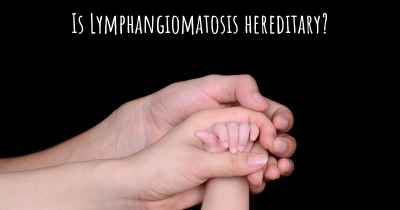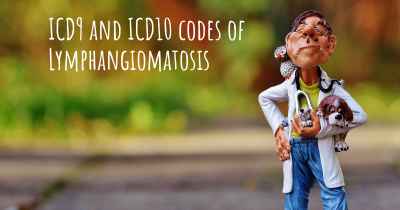Which are the symptoms of Lymphangiomatosis?
See the worst symptoms of affected by Lymphangiomatosis here

Symptoms of Lymphangiomatosis
Lymphangiomatosis is a rare disorder characterized by the abnormal formation and growth of lymphatic vessels. This condition primarily affects children and young adults, although it can occur at any age. Lymphangiomatosis can involve various organs and tissues throughout the body, leading to a wide range of symptoms and complications.
Pulmonary Symptoms:
One of the most common manifestations of lymphangiomatosis is the involvement of the lungs. Patients may experience symptoms such as cough, shortness of breath, chest pain, and recurrent respiratory infections. These symptoms can be caused by the presence of abnormal lymphatic vessels in the lung tissue, which can lead to the accumulation of fluid and impaired lung function.
Skeletal Symptoms:
Lymphangiomatosis can also affect the bones and joints. Patients may develop bone lesions, which can cause pain, swelling, and limited range of motion. These lesions can weaken the bones, leading to fractures or deformities. In some cases, lymphangiomatosis can involve the spine, causing spinal cord compression and neurological symptoms.
Abdominal Symptoms:
The abdominal region can be affected by lymphangiomatosis, leading to various symptoms. Patients may experience abdominal pain, bloating, and a feeling of fullness. The abnormal lymphatic vessels can also affect the digestive system, leading to malabsorption of nutrients and weight loss. In severe cases, lymphangiomatosis can cause bowel obstruction or liver dysfunction.
Soft Tissue Symptoms:
Lymphangiomatosis can involve the soft tissues, such as the skin and muscles. Patients may develop soft tissue masses or swellings, which can be painful and disfiguring. These masses are caused by the abnormal growth of lymphatic vessels in the affected tissues. In some cases, lymphangiomatosis can also affect the lymph nodes, leading to swelling and tenderness.
Other Symptoms:
In addition to the specific symptoms mentioned above, lymphangiomatosis can also present with other general symptoms. These may include fatigue, fever, night sweats, and generalized weakness. The severity and combination of symptoms can vary widely among individuals, depending on the extent and location of the lymphatic involvement.
Complications:
Lymphangiomatosis can lead to various complications, depending on the organs and tissues involved. For example, pulmonary involvement can lead to respiratory failure or recurrent infections. Skeletal involvement can cause bone fractures or spinal cord compression. Abdominal involvement can lead to malnutrition or liver dysfunction. Additionally, the presence of lymphatic masses can increase the risk of infection or bleeding.
Diagnosis and Treatment:
Diagnosing lymphangiomatosis can be challenging due to its rarity and diverse presentation. It often requires a combination of imaging studies, such as CT scans or MRI, along with a biopsy of the affected tissue. Once diagnosed, the treatment approach depends on the specific symptoms and complications experienced by the patient.
Treatment options for lymphangiomatosis are limited and primarily focus on managing symptoms and improving quality of life. This may involve medications to reduce fluid accumulation, pain management, physical therapy, and surgical interventions to remove or reduce the size of lymphatic masses. In some cases, targeted therapies or experimental treatments may be considered.
Conclusion:
Lymphangiomatosis is a rare disorder characterized by the abnormal growth of lymphatic vessels, leading to a wide range of symptoms and complications. It can affect various organs and tissues, including the lungs, bones, abdomen, and soft tissues. The symptoms can vary widely among individuals, and the condition can lead to significant morbidity and complications. Early diagnosis and a multidisciplinary approach to treatment are crucial in managing lymphangiomatosis and improving the quality of life for affected individuals.








